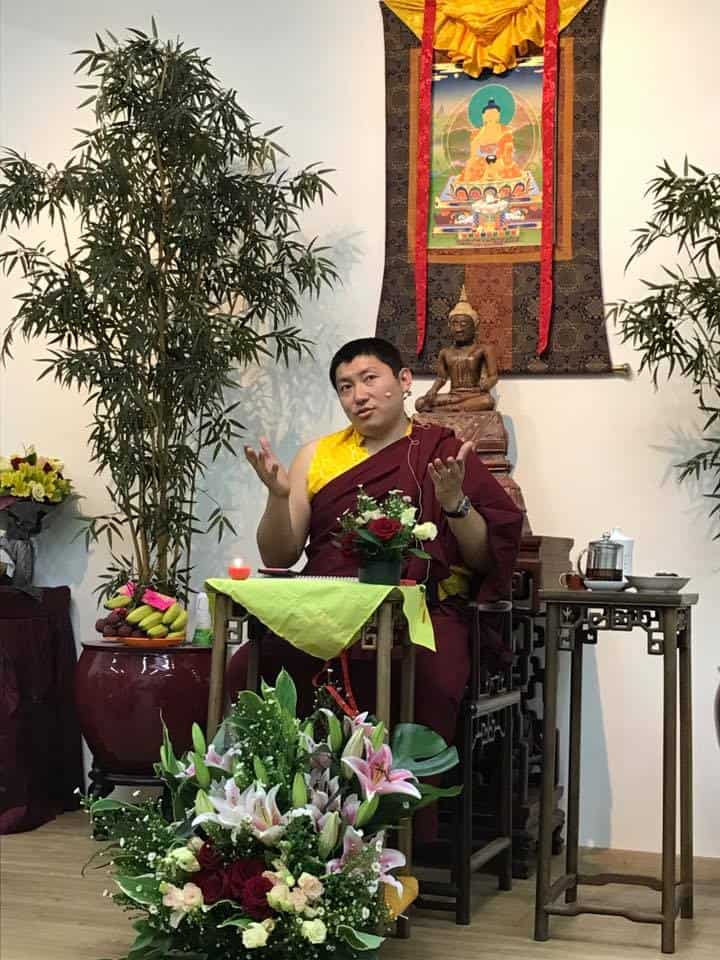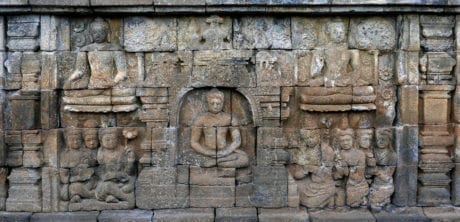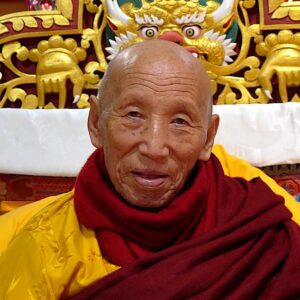Bodhisattvas arise from their practice of the path, but mainly through their own aspirations. In the introductory teaching below, Phakchok Rinpoche briefly explains the importance of aspiration and the importance of Samantabhadra’s role.
The King of Aspiration Prayer: Introduction
The King of Aspiration prayer comes from the Gaṇḍavyūha, or “Supreme Array,” chapter of the Avataṃsaka Sūtra. We know this text in translation as the “Flower Garland” sūtra. The Avataṃsaka Sūtra has been very influential in East Asian Buddhist thought. This sūtra’s full name is the Mahāvaipulya Buddhāvataṃsaka Sūtra.
This Gaṇḍavyūha chapter tells the story of Sudhana. This disciple performs a long pilgrimage seeking spiritual advice. During his travels, he receives teachings from over 50 spiritual friends. At the end of his quest after many experiences, Sudhana meets with the bodhisattva Samantabhadra.
Finally, Samantabhadra recites a poetic aspiration prayer to buddhahood. Because of the profound wisdom of the prayer as well as its beauty, many practitioners recite it regularly. Additionally, we find numerous artistic depictions of the prayer. For example, the fourth gallery of the 9th century Javanese monument at Borobodur contains narrative panels depicting Samantabhadra’s teachings to Sudhana.
Furthermore, this prayer greatly inspired the 11th-century Indian master Atiśa. He included a portion of the teaching in his famous text, the Bodhipathapradīpa (A Lamp for the Path to Awakening). All schools of Tibetan Buddhism teach these seven branches as a skillful method of accumulating merit. And, as Rinpoche explains in the introduction, the bodhisattva Samantabhadra performed this practice extensively.
The King of Aspiration Prayer: Part One
Here, we present Phakchok Rinpoche’s teaching on the King of Aspiration prayer. Rinpoche taught the prayer in several sessions. Similarly, we offer the audio recordings in three separate segments. We encourage you to listen to all three in order.
Throughout this teaching, he reminds us to approach this prayer by setting our egos aside. First, Rinpoche explains how aspiration waters the seed of motivation.
Then, he advises us to open our minds to the inconceivable vastness displayed in this prayer. By doing this, he says that we can learn how to practice correctly. Also, Rinpoche comments on the seven branches in detail. We can learn the benefits of these branches, and incorporate them in our daily lives.
Rinpoche’s teachings on the King of Aspiration continue here.
The King of Aspiration Prayer: Resources
Please click here for the text of the King of Aspiration prayer. Below, you can listen to the entire prayer chanted in Tibetan.













Responses